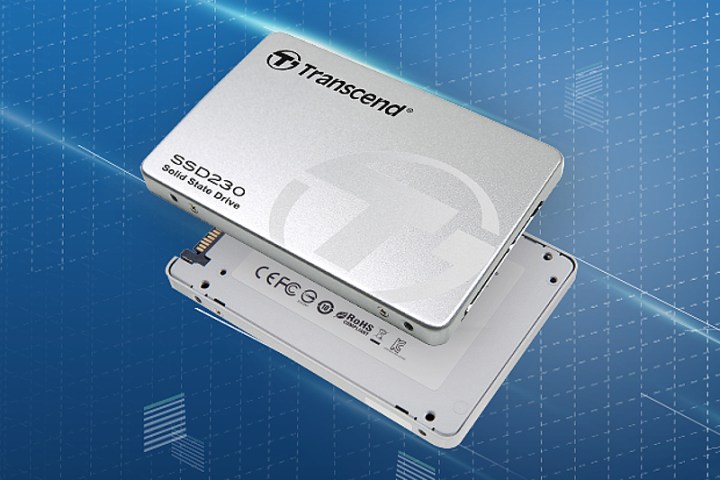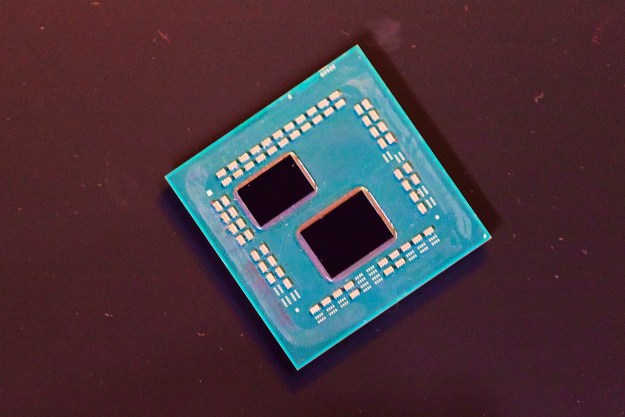
The big deal with 3D NAND flash is that it enables manufacturers to build on a drive’s capacity by expanding upward instead of outward. Normal NAND flash is eventually limited due to the amount of physical real estate, like a city restrained by its specific limits. That is not the case with 3D NAND, which builds skyscrapers to play host to floors of offices (cells) with residents (data) inside. 3D NAND is supposedly faster too, given data travels up and down “elevators” rather than seeking out a destination using “streets.”
“To achieve higher densities, 2D planar NAND flash technology shrinks each memory cell onto a single layer of cells,” Transcend Information explains. “However, this technology increases cell-to-cell interference and hence reduces reliability as it approaches its physical scaling limit. 3D NAND flash was developed to resolve this bottleneck, as it features multiple layers of memory cells stacked vertically.”
In addition to using 3D NAND flash, the new SSD also includes a DDR3 DRAM cache that increases the drive’s 4K random read and write performance. Given that SSDs include a built-in controller to manage all the data that goes in and out of the drive’s virtual skyscrapers, this controller needs a small area to work as it shuffles around all the local residents. The drive also includes a built-in RAID engine for pairing it with other SSDs, low-density parity check coding, and an ECC algorithm that keeps your data secure.
Here are the specs and pricing of each capacity:
| 128GB | 256GB | 512GB | |
| Storage media: | 3D NAND TLC Flash | 3D NAND TLC Flash | 3D NAND TLC Flash |
| Sequential read speed: | 560MB per second | 560MB per second | 560MB per second |
| Sequential write speed: | 300MB per second | 520MB per second | 520MB per second |
| 4K random write performance: | 30,000 IOPS | 60,000 IOPS | 87,000 IOPS |
| 4K random read performance: | 76,000 IOPS | 87,000 IOPS | 87,000 IOPS |
| TRAM & NCQ Command: | Yes | Yes | Yes |
| S.M.A.R.T. tech: | Yes | Yes | Yes |
| DDR3 DRAM cache: | Yes | Yes | Yes |
| Advanced garbage collection: | Yes | Yes | Yes |
| DevSleep mode: | Yes | Yes | Yes |
| Casing: | Aluminum | Aluminum | Aluminum |
| Size: | 3.93 x 2.75 x 0.26 inches | 3.93 x 2.75 x 0.26 inches | 3.93 x 2.75 x 0.26 inches |
| Weight: | 0.14 pounds | 0.14 pounds | 0.14 pounds |
| Mac Support: | No | No | No |
| Interface: | SATA 3 (6Gb/s) | SATA 3 (6Gb/s) | SATA 3 (6Gb/s) |
| Model number: | TS128GSSD230S | TS256GSSD230S | TS512GSSD230S |
| Price: | $51 | $82 | $162 |
What is great to see here is that pricing of SSDs are coming down while the read and write performance stays relatively great. The maximum write speed of the 128GB model is somewhat slow compared to its siblings but overall, all three seem to provide a great speed boost to a laptop or desktop for very little money. All three drives can be managed by the company’s SSD Scope software for optimizing performance and maintaining their health.
The SSD230 drives can now be purchased online through Amazon, Newegg, and more.
Editors' Recommendations
- Glasses-free 3D gaming can be amazing — but only if it’s done right
- 3D printed cheesecake? Inside the culinary quest to make a Star Trek food replicator
- Sony’s new 3D display tech keeps getting bigger and better
- AMD might deal a huge blow to Intel with new 3D V-Cache CPUs
- AMD is bringing 3D V-Cache back to Ryzen 7000 — but there’s a twist


